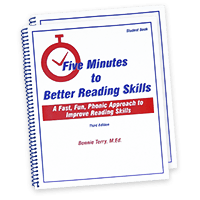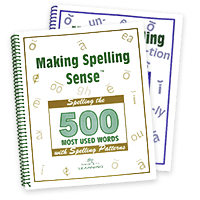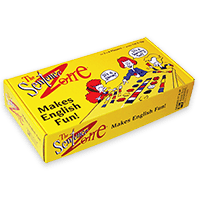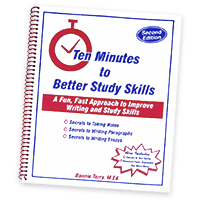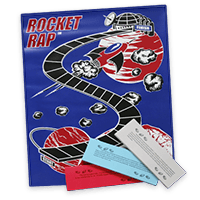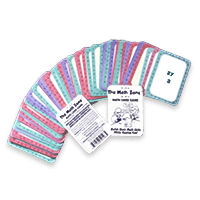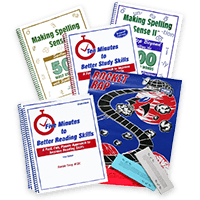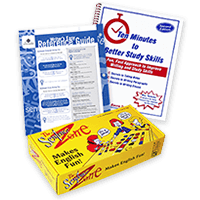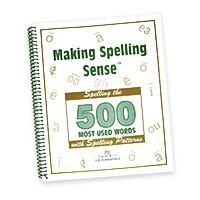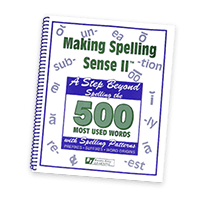Did you know that 7 of 10 children are not proficient in math?
The 3 Roadblocks to Math
-
Memory Problems
Trouble remembering math facts and steps to solving problems -
Math Concepts: Cognitive Development Problems
Understanding the relationships between numbers: how numbers grow and shrink with addition, subtraction, multiplication, division, fractions, decimals, math vocabulary
-
Visual Spatial or Alignment Problems
Trouble aligning numbers into columns for calculations, place value, or reading maps and graphs
If your child has a hard time with math, there is a reason for it.
The Story Behind Discovering the Roadblocks to Math
You know how difficult it is to see your child struggle or take forever to do their math assignments. How many times do your kids come home with a math assignment and can’t wait to get to work on it? More often than not your kids come home and avoid it, put it off, and when they finally get down to doing it, they need your help. That has been my experience with both my own children and with my students.
Memory Problems
Nothing would drive me crazier than having one of my sons say to me, “It made sense when she (his teacher) explained it, but I don’t remember how to do it now.” Or my students would come to their session totally overwhelmed, not have a clue how to do the assignment, and not have their math book with them, only their math homework sheet.
Sloppy Work – Visual Spacial or Alignment Problems
Sometimes parents would tell me how their child could actually do the calculations but often got terrible scores on their papers. Upon looking over their child’s papers I discovered they hadn’t lined up their numbers correctly, keeping their columns straight.
Understanding Math Concepts Problems
When my students moved from simple division to long division and then on to word problems and fractions everything seemed to collapse. My students knew that fractions were parts of a whole. They just didn’t understand that the parts had to be equal.
Then one day they were introduced to decimals. They were really thrown now. Long division and long multiplication was hard for them and now they had to do it with decimals. No one had explained that decimals were just like money. They were familiar with seeing decimals used in money when they or their parents purchased items such as groceries, clothing, or fast food. No one had pointed out the connection of decimals and money to them before.
Often parents aren’t sure how to explain the math assignment or they can’t remember how to do that type of problem because they haven’t had to deal with fractions, decimals, or percents since they were in school.
The challenge of math is that if kids don’t understand the basics of math, they become lost. In fact, if kids don’t have the foundation, the further they go, the more lost they get. Most kids have gaps in their understanding of calculations with: fractions, decimals, percents, or word problems. Without these basics, once they’re in Algebra and beyond, they tend to feel hopelessly lost.
These 3 overall roadblocks make math difficult for many of us. Fortunately, I have three solutions that will greatly enhance your child’s math abilities!
Bonnie’s Story
Does Your Child Dread Math? By the time I was in the 4th grade, I did and My Dad Claimed Math Was Like a Game!
Does your child come home night after night and struggle to do his math homework? Does your child have a hard time with math calculations? I’ll never forget coming home from school and asking my dad for help with my math homework night after night. Finally one night when we were going over an assignment my dad said, “Bonnie, math is just like a game.”
Then he went on to talk about numbers in different games we had played, whether they were card games or board games, numbers were everywhere and every time we played a game numbers were a big part of the game. Just knowing that somehow changed my view of math.
However, when I started teaching, I had students that had a hard time with calculations: adding, subtracting, multiplying, and dividing. When I gave several of my students a work sheet of problems, their whole body would tense up. They just didn’t LIKE math and didn’t want to have anything to do with it. It seemed like a losing battle.
Solution 1: A Game to Address Memory and Math Concepts
The Math Zone
I remembered what my dad had told me about math, so I decided to actually make a math game. That way, instead of doing math worksheets, my students could just play a game. And playing would give them the practice they needed to master addition, subtraction, multiplication, and division. It would also help my students to see and understand the relationships between the processes and give them practice with place value!
Before you knew it, my students that were struggling with math were anxious to move to the higher level of The Math Zone (there is an easy level of play and a harder level of play) and work with more difficult calculations. It was so cool, them asking to use the bigger numbers! And then they started realizing that math WAS a GAME. It wasn’t so hard anymore.
So, instead of spending another evening full of whining and complaining about how hard math is, play The Math Zone and let your child discover that math really is just a game!
Solution 2: A Reference Guide to Address Memory and Math Concepts
The BT Easy Math Reference Guide
My students were getting quite good at the actual math calculations after practicing with The Math Zone, but when it came to remembering how to do word problems or manipulate fractions and decimals, they still had problems. They would come in day after day saying that the math lesson either made perfect sense to them when their teacher explained it to them but they couldn’t remember how to do it now, or that they didn’t get the explanation at all, so they needed help to do their assignment.
I knew I had to do something to help my students understand their math assignments. I knew they needed to be able to do their assignments on their own. I knew I wouldn’t always be available to them.
When my math students came in with an assignment, I ended up spending a lot of time looking for the best resource to help them solve the problems on their own. Often I would go to 3 or 4 different resources to find an explanation that my students could understand. I shared these resources with my students instead of just explaining the ‘how to do it’ to them. By teaching my students how to use resources they learn how to solve their math problems on their own. One of the empowerments of education is to be able to research or find the information you need to help you. In other words, learning how to learn.
So after spending several years of pulling out multiple resources for my students to use to help them help themselves, I decided the best thing to do would be to combine all of that critical information they needed to do their math assignment into a math reference guide. That way they would have the step-by-step help they needed in their hands even when they weren’t at my learning center.
The BT Easy Math Reference Guide was the result. It would bridge the gap between the theoretical and the practical. It can also help you become not only your child’s home tutor, but your child’s Math Guru and be so easy to use that your child will even be able to use it on their own.
BT Easy Math Reference Guide will give your child readily available resources to help them:
- Add, subtract, multiply, and divide.
- Calculate fractions, decimals, and percents.
- Calculate area, perimeter, and ratio.
- Recognize and do calculations with geometric shapes, lines, and angles.
- Find the clue words for word problems.
- Solve word problems with ease.
- Understand math vocabulary.
Solution 3: Organizational Sheets to address Visual Spacial or Ordering Problems
Super Spacers
There are a number of problems that occur when a child has problems in visual, spatial, or sequential aspects of mathematics. They may:
- Be confused when learning multi-step procedures
- Have trouble ordering the steps used to solve a problem
- Feel overloaded when faced with a worksheet full of math exercises
- Not be able to copy problems correctly
My students were getting really good at doing the calculations and understanding the math concepts after playing The Math Zone and using the BT Easy Math Reference Guide. But, sometimes they still got the wrong answer.
One of my students, John, was a master at this. When I wrote the problem on a white board and he talked me through the problem, he’d always be correct. However, when he did the problems himself on his sheet of notebook paper, he’d invariably make a mistake. I’d check his work and 90% of the time his mistake was due to the fact that he had misaligned his columns.
I started off having him do his math work on notebook paper set up sideways so he’d have columns instead of lines to write on. This worked out pretty well, but he would not allow enough space between the problems, so he still ran into some trouble. That’s when a light bulb went off for me. What if he only put 10 problems on a page and the space for each problem was well defined. So, I came up with an idea and made a ‘super spacer’ for him to place on top of his notebook paper.
I couldn’t get over the difference. His paper was neat now and he was accurate! Then I had other teachers try out the spacer and they loved it too, so I decided to make it available for everyone.
